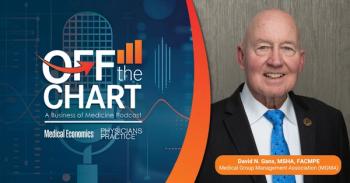
PayerView 2011: A Clean(er) Bill of Health
Our latest analysis of the annual ranking of payers based on hassle factor is here. The good news: Most insurers are paying faster, denying less, and making their processes more transparent. But there's still room for improvement.
If you thought the Great Recession would lead insurance companies to slow down claims payment processing times, think again. Despite the lingering effects of the downturn, payers generally paid promptly in 2010, while reducing many (but not all) extraneous administrative burdens on physicians.
That's according to PayerView, an annual ranking of payer performance conducted by athenahealth, a large revenue cycle management and EHR company, which produces annual rankings of payers based on how well, or badly, they work with physicians.
Physicians Practice has been reporting extensively on the PayerView rankings - the only payer performance analysis that's based on real claims data - since the project began in 2005. The joint objective: to improve payer-practice relations by shining a bright light on payer performance on those "hassle factor" metrics that matter most to physician practices.
Not paying enough is one thing. Making you jump through flaming hoops to get paid at all is quite another. With PayerView, we hope to prompt improvements on those processes that so often drive you and your staff batty, while providing you with vital information to analyze your own payers, especially when contract renewal time comes around.
"The insurance companies have always had more leverage in negotiations because they had the rich data," says Lucien W. Roberts, III, MHA, an associate administrator of business development at MCV Physicians in Richmond, Va. "In many ways, they knew our practices better than we did."
No more. The field is getting more level, and the payers, to their credit, are getting better.
Now let's dig into the numbers.
This year's PayerView report is based on actual claims performance data in 2010 from 27,000 providers, for more than 47 million charge lines, representing $9 billion dollars in charges. The services were billed to 132 payers by providers in 41 states.
The best evidence that claims payment timeliness did not slack off last year comes in the form of reductions in the average number of days that claims spent in accounts receivable. As a group, the Blue Cross & Blue Shield (BCBS) plans and the national commercial payers (Aetna, Cigna, Humana, and UnitedHealthcare) reduced days in A/R (DAR) to 24 days, lopping a full day or more from their performance in the previous year. Medicare, often the leader here, regressed slightly to 25.8 days, thanks to delays caused by Congress' extended debate over the Medicare fee schedule.
Of course, how well your own payers performed in working with you in any particular category could vary from our PayerView results - which are, of course, averages drawn from the experience of thousands of providers, all of them benefiting from athenahealth's services, which are designed precisely to help practices get paid quickly and correctly.
When we ranked best-in-class performance for all payers in all categories, the top performer in DAR was Blue Cross & Blue Shield of Rhode Island at 14.6 days. Does any payer in your patient mix come close to that? We also found that Oregon's Medicare B carrier was in the top spot in the key metric of first-pass resolution rate - claims paid the first time they were submitted, paying 98.1 percent of claims on first submission.
Key measures
PayerView is designed to show how each payer performs in areas important to physician practices. A data team at athenahealth weights the various metrics to reflect their relative degree of importance to practices. You can see what's measured, and how much weight is given to each, in the
The number crunchers then use a complex logarithm to arrive at overall rankings. But the company does not publicly report its overall "final score" for the payers; instead, it reports only the rankings and the payer performance within each individual metric.
It is important to note that the results do not include all payers. As in previous years, a minimum number of claims for which athenahealth had data was needed for a payer to be measured - 4,000 claims per quarter from at least six physician practices in 2010. If any single athenahealth client contributed a disproportionate percentage of a payer's claims, those claims were removed from the calculations.
Payers included also had to support the Health Insurance Portability and Accountability Act (HIPAA) electronic transaction set for eligibility benefit transactions (270 and 271), electronic remittance advice (ERA) transactions (835), and claims transactions (837).
One metric from past years, Denial Transparency, has been replaced this year with the more targeted ERA Transparency. Another, Eligibility Accuracy, has been revised to include a payer's use of the "other payer" segment in the eligibility transaction, which can be used to reduce coordination-of-benefit denials.
Major payers
When the eight major public and private payers - the ones that cover more than 5 million beneficiaries - were compared, Aetna grabbed the top spot overall, followed by last year's leader, Humana.
Medicare had the highest Provider Collection Burden rate at 24.1 percent in 2010, largely the result of transfers of responsibility to secondary payers. As a result, rate of accuracy for providing information about patient eligibility was the lowest among the major categories of payers at 92.5 because that metric dings payers for transferring responsibility to other payers.
In comparison, state Medicaid plans as a whole reached eligibility accuracy rates of 95.1 percent, but Medicaid is also the slowest of payers, taking 48.6 days on average. Even that glacial rate was a major improvement over the previous year's DAR of 57.2 days, but Medicaid denial rates regressed last year - almost one in five Medicaid claims was denied, largely due to disruptive computer system changes in some states. On average, state Medicaid plans provided actionable explanations and clear steps only 76.7 percent of the time in ERA denial messages. In comparison, other payers averaged ERA transparency rates of 90 percent or more. All this raises concern about what will happen as healthcare reform brings more patients into practices via Medicaid eligibility expansions.
Transfers of responsibility
The PayerView data confirms something that physician practices have already seen, and should expect to see more of in coming years: the need to collect more cash from patients in the form of deductibles, coinsurance, and other payments.
Transfers of financial responsibility to patients continued to increase last year for all types of payers, with the Blue Cross Blue Shield plans leading the pack (see Components of Provider Collection Burden). About half of these transfers were in the form of deductibles. The Blues also had an above-average rate of transferring the cost of noncovered services to patients.
Medicare and most major commercial payers, including Aetna, Cigna, Humana and UnitedHealthcare, likewise increased their rate of responsibility transfers. Higher deductibles for insured beneficiaries and more people switching to those plans in response to higher premiums both translate to a higher collection burden for providers.
Collecting more cash from patients is a growing reality for medical practices, says athenahealth's Melissa Lukowski, which is why more payers offer real-time claim adjudication (RTA), estimators, and other tools to help providers understand patient liabilities at the point-of-service. RTA allows providers to determine the exact patient liability owed at the time of service. It reduces costs associated with sending out patient statements and managing patient collections. Unfortunately, providers are slow to adopt RTA: athenahealth providers with live RTA for both Humana and UnitedHealthcare enter claims at the time of service just 5 percent to 7 percent of the time, and collect patient liability less than 1.5 percent of the time.
"The industry is in an interesting impasse," says Lukowski, athenahealth's director of payer outreach. "Providers do not want to change their work flow for a handful of payers and payers do not want to invest in real-time claim adjudication capabilities until they are confident that providers will adopt."
Billing and collections consultant Shannon DeConda of DoctorsManagement sees too few practices using any of the electronic transaction tools available to estimate deductibles, assure patient eligibility, and gather other key information.
"It blows the mind of every consultant that so many resources exist for a practice to check eligibility and benefits prior to each patient visit, but so few offices take advantage of those tools," DeConda says.
She says many practices are reluctant to reengineer internal operations or invest in the electronic systems needed to gain more instant transparency from payers about patient coverage and claims status. Even if the services must be handled by a third-party vendor, it would be worth the cost, she says.
"Statistics tell us that the majority of patient responsibility monies not collected at the time of service will never be collected," DeConda says.
And as more companies begin hiring as the recent recession fades, expect to see more offer high-deductible health plans with new employees gravitating to those plans, says Roberts. The burden will be on practices to know how much they are owed, and by whom, before the service is provided, he says.
With the current electronic health record initiative, the 5010 version of the HIPAA electronic transaction set coming in 2012 and the ICD-10 code set coming in 2013, Roberts says small practices and those without strong managers may find there aren't enough hours in the day to get all the preparation and transition work done.{C}
"Not wanting to get left behind is leading more doctors to align themselves with large systems," Roberts says.
The light at the end of the tunnel, if you can make it there, is that practices and payers may be able to become better partners in managing care.
"We can partner with payers and get more data on populations and outcomes, and get away from simply looking at cost and utilization as the gauges of quality," he says. "If we can go beyond the conversations about utilization and speak about outcomes and quality, it will put practices in a much stronger position."
Gaining and using transparency in transactions between payers and practices may be a high hurdle to overcome, but Lukowski says the resulting transparency is much more than a warm fuzzy feeling.
"The numbers show that with transparency between payer and practices, there is a reduction in cost and across-the-board improvements in performance," Lukowski says. "Knowing exactly what it's going to cost when we go to the doctor and having the money transaction take place at the time of service: that's what the industry needs to manage itself sustainably."
For the sixth year, PayerView ranks payers on how much, or little, hassle it is for providers to do business with them. The key findings:
• Aetna achieved the top overall ranking among national commercial payers. Humana ranked second.
• Medicare has the highest Provider Collection Burden rate, largely due to transferring responsibility to secondary payers. Medicare's performance in days in accounts receivables suffered because of the claims delays while Congress debated the Medicare fee schedule.
• Medicaid plans had the worst performance in days in accounts receivable, denial rates, and electronic remittance advice denial accuracy - their lack of transparency in the claims process runs counter to the industry trend to reveal more about claims status.
• Plans in nearly every category placed more burdens on practices to collect patient liabilities, such as deductibles.
Robert Redling is a freelance writer based in Tacoma, Wash. He has been practice management editor for Physicians Practice, Web content editor and senior writer for the Medical Group Management Association, and a speechwriter for the American Academy of Family Physicians. He can be reached via
This article originally appeared in the June 2011 issue of Physicians Practice.
Newsletter
Optimize your practice with the Physicians Practice newsletter, offering management pearls, leadership tips, and business strategies tailored for practice administrators and physicians of any specialty.









